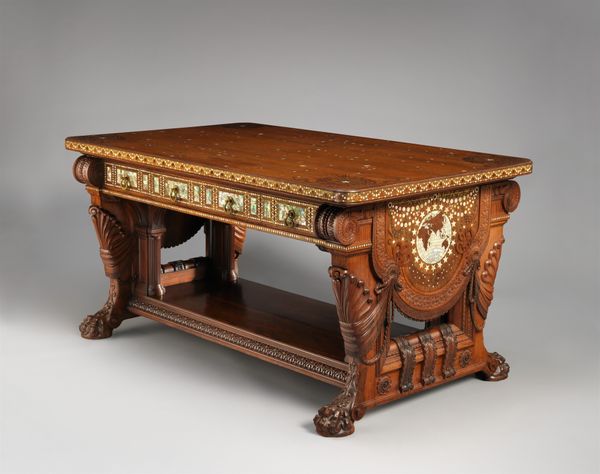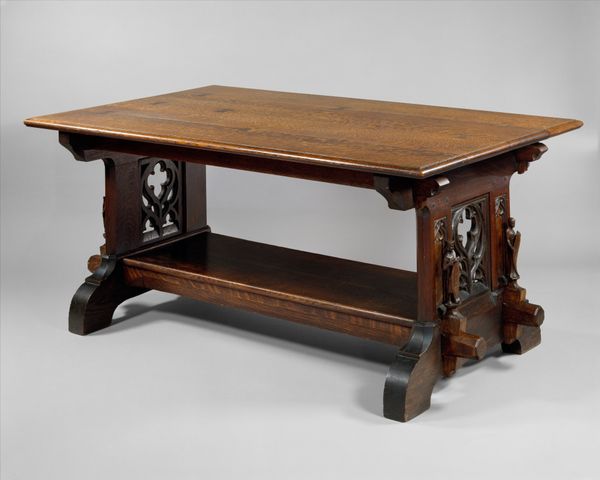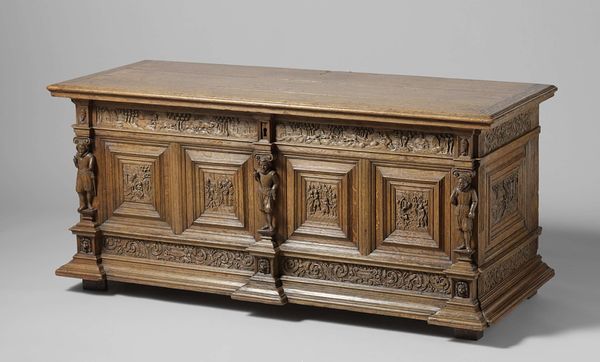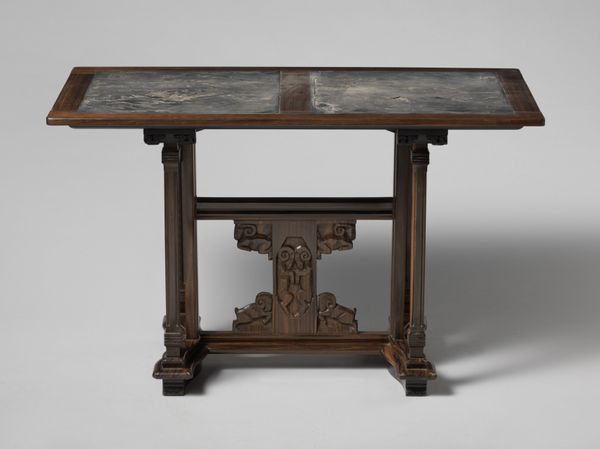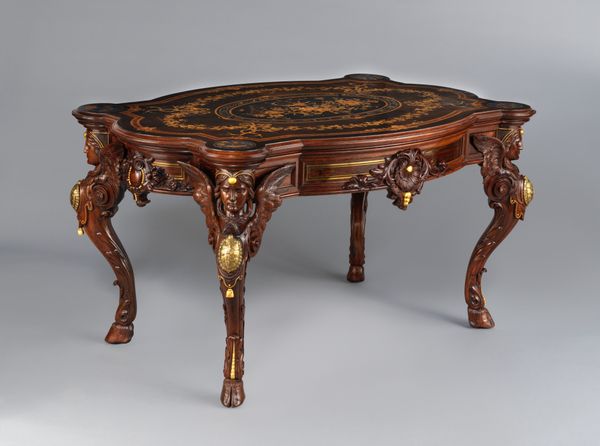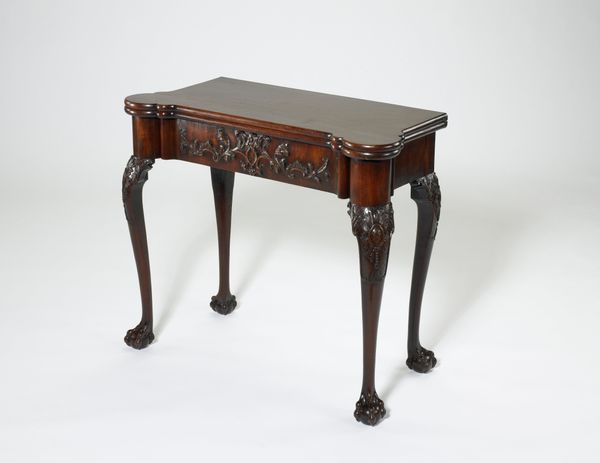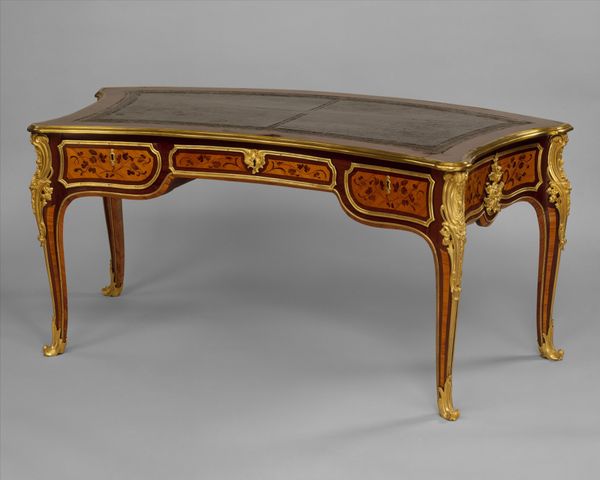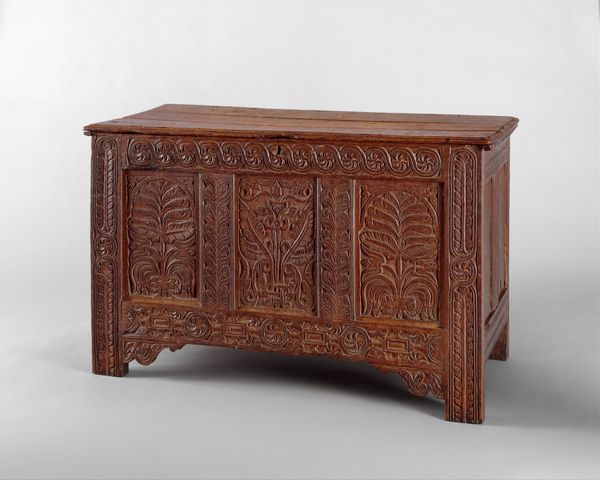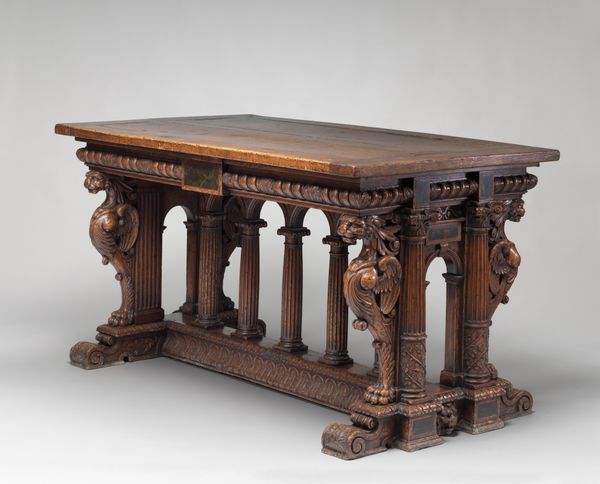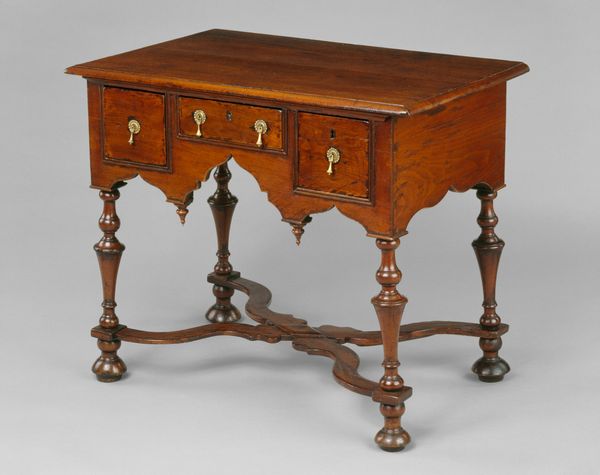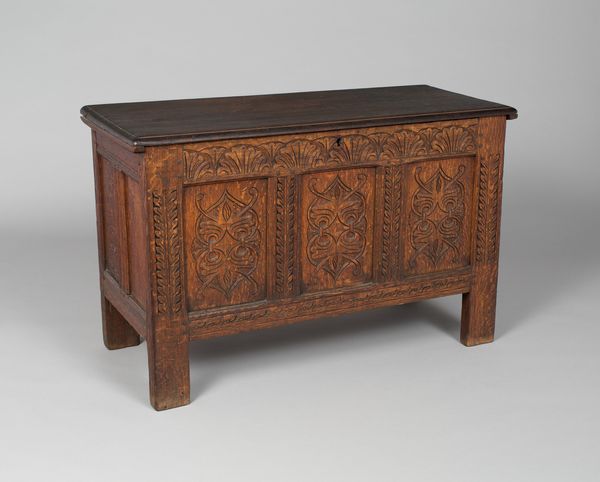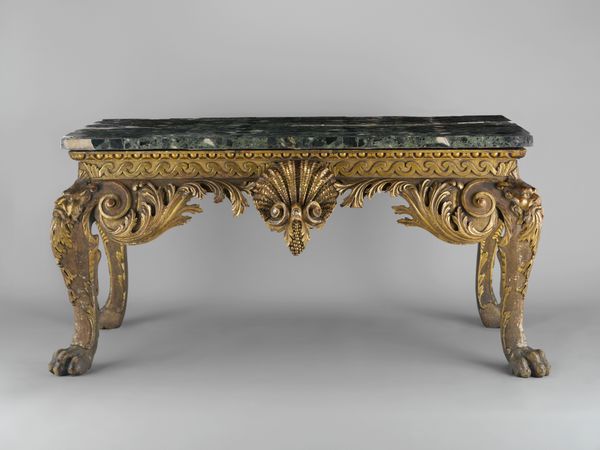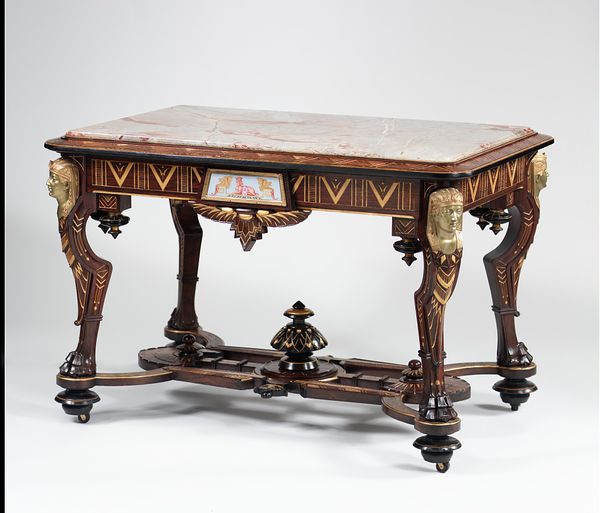
Tafel van eikenhout met omgekeerd flesvormige poten. Onder tafelregels gebeeldhouwde opengewerkte sierstukken met putti, blad- en bloemwerk en wapen Van Selbach en jaartal 1697 1697
0:00
0:00
carving, wood
#
wood texture
#
carving
#
baroque
#
dutch-golden-age
#
furniture
#
wooden texture
#
wood
Dimensions: height 85.0 cm, width 221.0 cm, depth 92.0 cm, weight 87 kg
Copyright: Rijks Museum: Open Domain
This oak table with bottle-shaped legs was made in 1697 by Jan de Rijk. Its carved ornaments of putti, foliage, and the Van Selbach coat of arms offer a glimpse into the social and cultural milieu of the Dutch Golden Age. The coat of arms tells us this table was made for a family of status, likely to be placed in a large home. As an object, the table is a powerful marker of identity and status. However, this status would have been built upon exploitative colonial structures. The wealth to commission such a piece was often directly linked to the labor of enslaved people and the extraction of resources from colonized lands. De Rijk's craftsmanship invites us to consider the emotional investment and skill involved in creating such detailed work. The table’s ornate carvings and sturdy construction represent both the celebration of family lineage and the complex historical narratives of power, wealth, and identity.
Comments
No comments
Be the first to comment and join the conversation on the ultimate creative platform.

